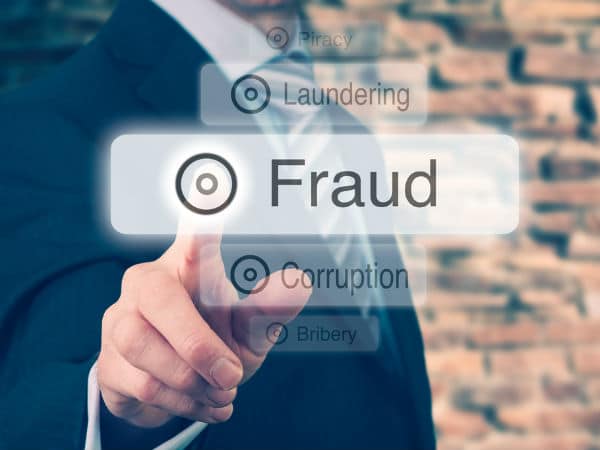Shielding Yourself from Wire Fraud in 2024: The Fight for Financial Security

Wire fraud continues to be a plague on financial transactions, and even the most tech-savvy individuals find themselves victims. Unfortunately, this trend will likely continue in 2024 as criminals get more resourceful, creating greater urgency for robust, dynamic fraud protection solutions.
Here, we unpack the landscape of wire fraud in 2024, highlight emerging strategies for protection, and explore how technologies are being harnessed to outsmart scammers.
The Evolution of Wire Fraud Tactics
While wire fraud methods can seem predictable (phishing emails, impersonation scams, etc.), scammers are becoming increasingly sophisticated. These include:
- Deepfakes: The Deception Frontier
- Imagine receiving a video call from your financial advisor or CEO with a request to urgently transfer funds. That person’s voice, their mannerisms…it all seems perfectly authentic. However, with advanced AI “deepfake” technology, that familiar face and voice could be a complete fabrication, created with malicious intent. This unsettling level of impersonation presents a huge challenge for 2024.
- Synthetic Identities: A Phantom Menace
- Fraudsters are no longer simply stealing existing identities. Now they’re building entirely fake ones – “synthetic identities.” Using a mishmash of real data (stolen social security numbers, for example) blended with completely fabricated information, they create convincing-looking profiles. These fake identities open doors to fraudulent loans, credit applications, and other financial havoc.
- Data Breaches: The Fuel for Targeted Scams
- Every new large-scale data breach (leaked passwords, personal info, etc.) is a gift to wire fraud criminals. Now they don’t have to work from scratch. A snippet of your online shopping history, combined with breached financial data can make phishing emails alarmingly persuasive and targeted, urging you to “reset” an account or address a fictitious order.
What Makes These Tactics so Dangerous
- Undermining Trust: When any voice or face can be realistically faked, it shatters our basic trust in digital communication. The urgent email that used to be suspect can now be paired with deceptive authenticity.
- Bypassing Traditional Defenses: Many security measures rely on verifying someone’s existing identity. Synthetic identities circumvent this; they essentially are “legitimate” from the start, fooling background checks and credit scores.
- Psychological Appeal: These new tactics prey on our familiarity, sense of urgency, and helpfulness. We’re naturally more compliant when a person looks familiar or an issue involves an organization we use. Wire fraud is evolving from generic phishing to tailored attacks.
The Road Ahead
The battle against wire fraud in 2024 needs an equally sophisticated response:
- Identity Verification 2.0: Systems verifying “personhood” need to go beyond static data points, exploring real-time behavioral analysis and multi-layered verification protocols.
- AI-Powered Defense: Using machine learning to track anomalous patterns and detect unusual transactions in real-time is crucial to combat this growing sophistication.
- Responsible data-handling: Companies must prioritize data protection and privacy practices. Each major data breach strengthens the fraudsters’ hand.
Let me know if you want a breakdown of a specific tactic or want to explore ways of countering these techniques!
2024: The Year of Proactive Protection
Wire fraud defense in 2024 takes a shift from reactive measures to proactive safeguards. Here’s what to expect:
- The Zero-Trust Imperative: Gone are the days of blindly trusting emails and communication. Every financial transaction now needs careful verification using multiple channels.
- Behavioral Analytics: AI-powered tools that monitor typical user behavior for early red flags on potentially fraudulent activity.
- Blockchain Security: While still in its early stages, blockchain’s transparent, immutable ledger system has potential for transaction verifications, offering additional protection.
- Enhanced Consumer Education: Targeted consumer awareness campaigns highlighting evolving tactics and promoting vigilance are crucial.
Protecting Yourself Against Wire Fraud
You play a vital role in wire fraud prevention. Here are some best practices:
- Double (or Triple) Check Everything: Verify phone numbers, email addresses, and website URLs independently before providing sensitive information or transferring funds.
- Be Suspicious: Any unusual requests, urgency, or errors in correspondence, particularly involving financial information, should raise red flags.
- Protect Your Online Identity: Regularly change passwords, ensure security settings are up-to-date on websites and applications, and be very cautious about what information you share online.
- Leverage Available Security Tools: Many financial institutions offer additional security features, such as multi-factor authentication and notification systems for unusual activity.
- Report Immediately: If you suspect fraudulent activity, immediately contact your financial institutions and report it to the relevant authorities,
The Future of Wire Fraud Protection
While the threats keep evolving, so do defensive methods. Expect an increased emphasis on collaboration between financial institutions, businesses facing these threats, technology providers, and government agencies to forge stronger wire fraud solutions. Furthermore, advances in technology will likely allow for greater speed and flexibility of anti-wire fraud defenses.
We all need to fight this scourge – a combination of technological advancement, individual vigilance, and industry collaboration will provide the strongest defense against wire fraud in 2024 and beyond.
